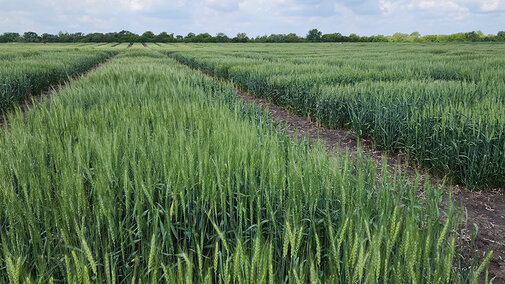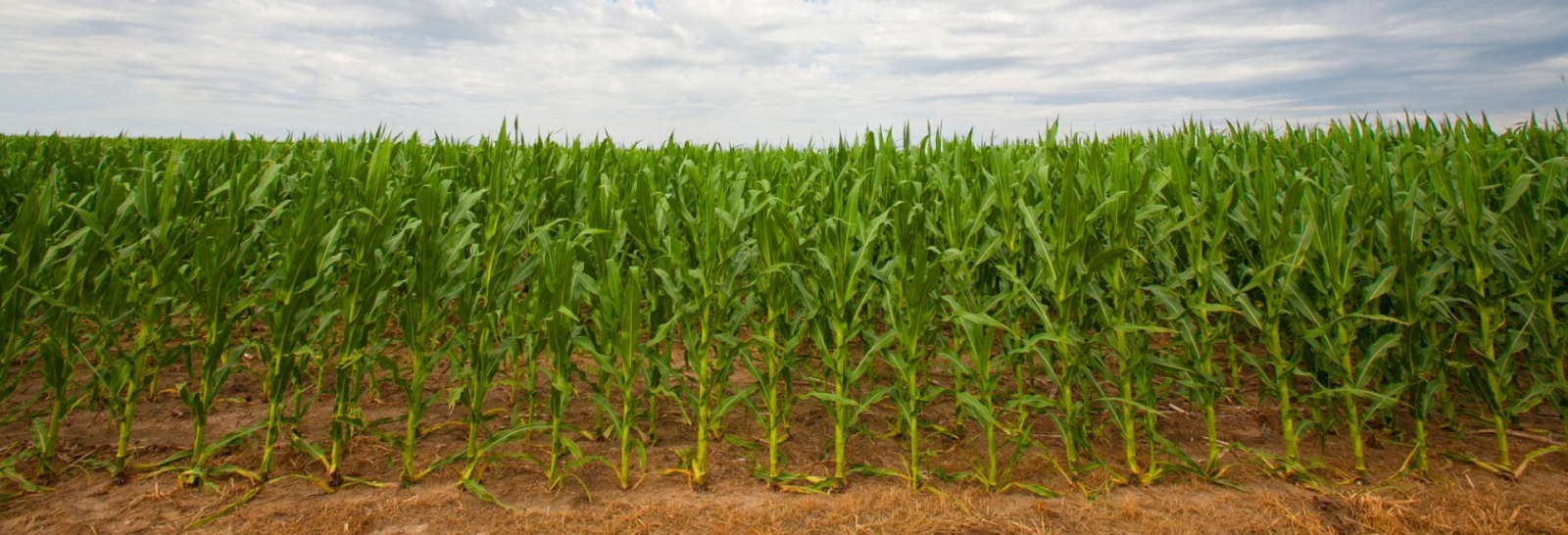On May 29, wheat disease surveys were conducted in University of Nebraska-Lincoln research plots at Havelock Research Farm in Lincoln, Lancaster County (Figure 1) and in USDA ARS research plots at the Eastern Nebraska Research, Extension and Education Center (ENREEC) near Mead, Saunders County. Both counties are in southeast Nebraska.
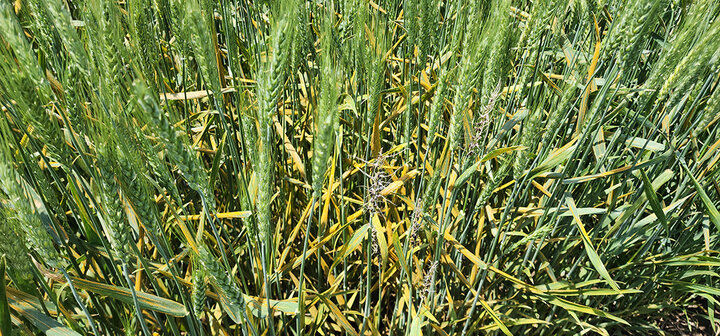
Stripe rust (Figures 2 and 3) was found at both locations. Incidence (percentage of symptomatic leaves or plants) was trace at the Lincoln location and severity (percentage of leaf area covered with rust pustules) was moderate. At the ENREEC location, incidence was moderate and severity ranged from trace to very severe in hot spots (Figure 2). Stripe rust has now been confirmed in three counties in southeast Nebraska (Figure 4).
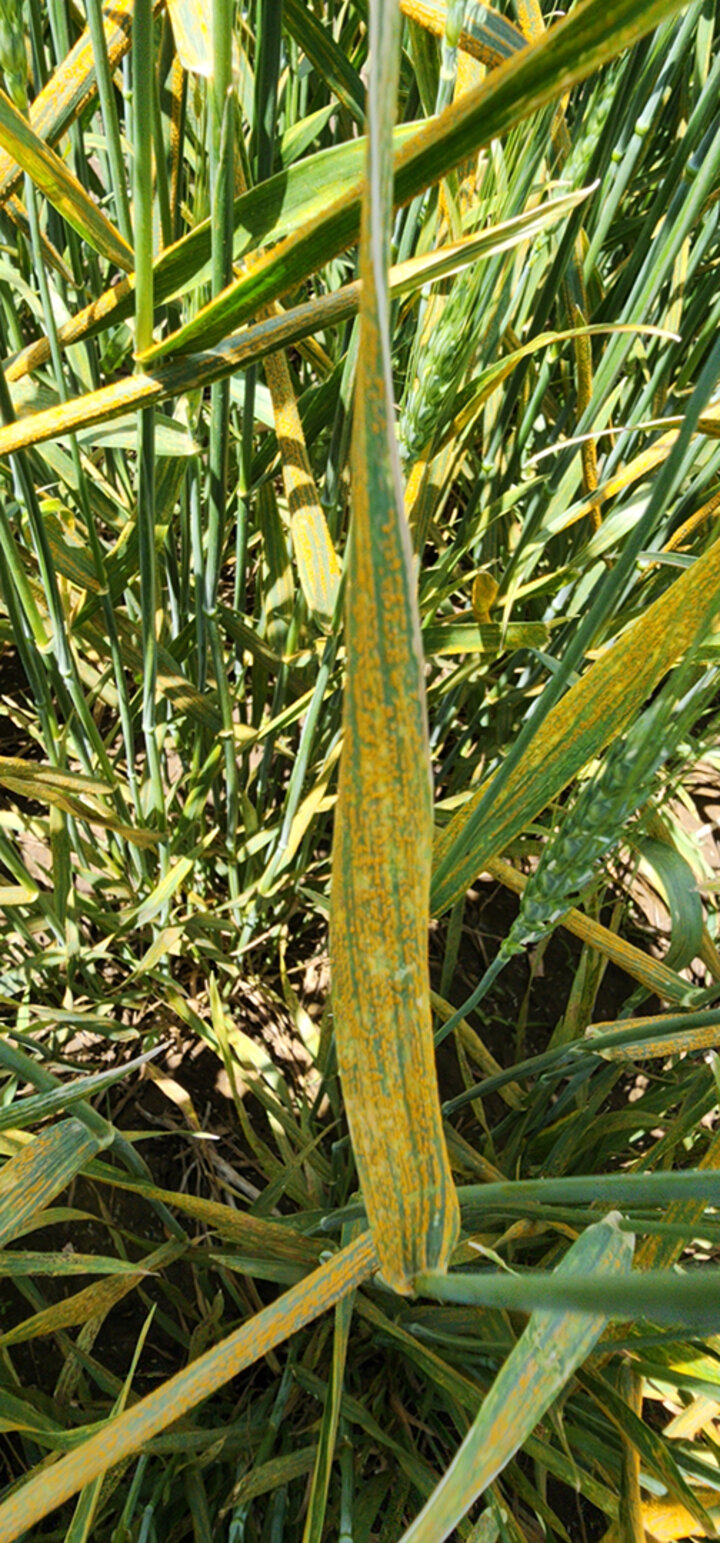
Other diseases observed at low to moderate levels were barley yellow dwarf (BYD, a virus disease; Figure 5), the wheat streak mosaic virus (WSMV) disease complex (Figure 6), Septoria tritici blotch (Figure 7), and loose smut (Figures 8 and 9).
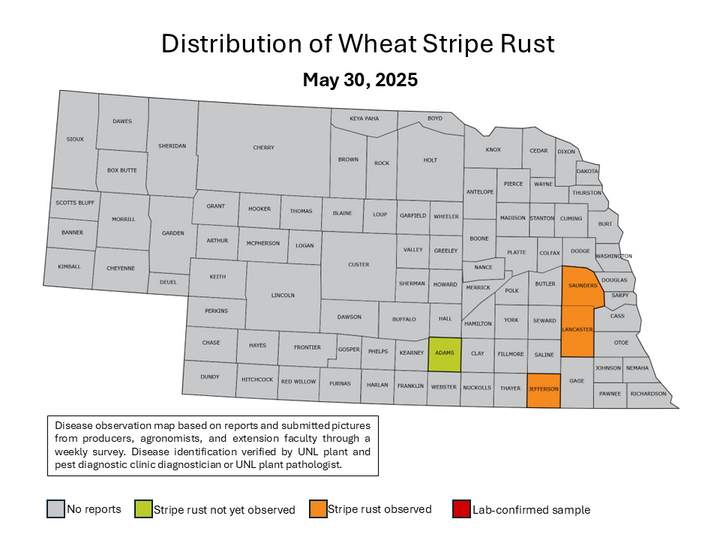
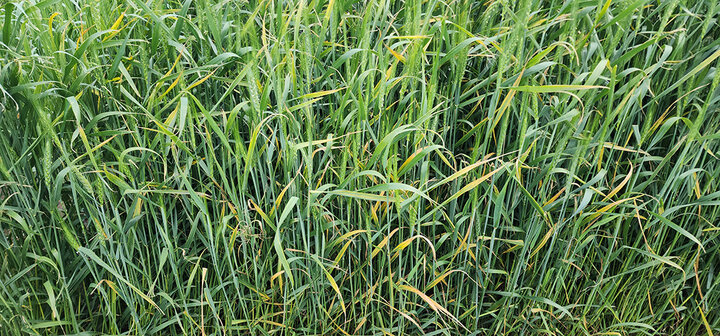
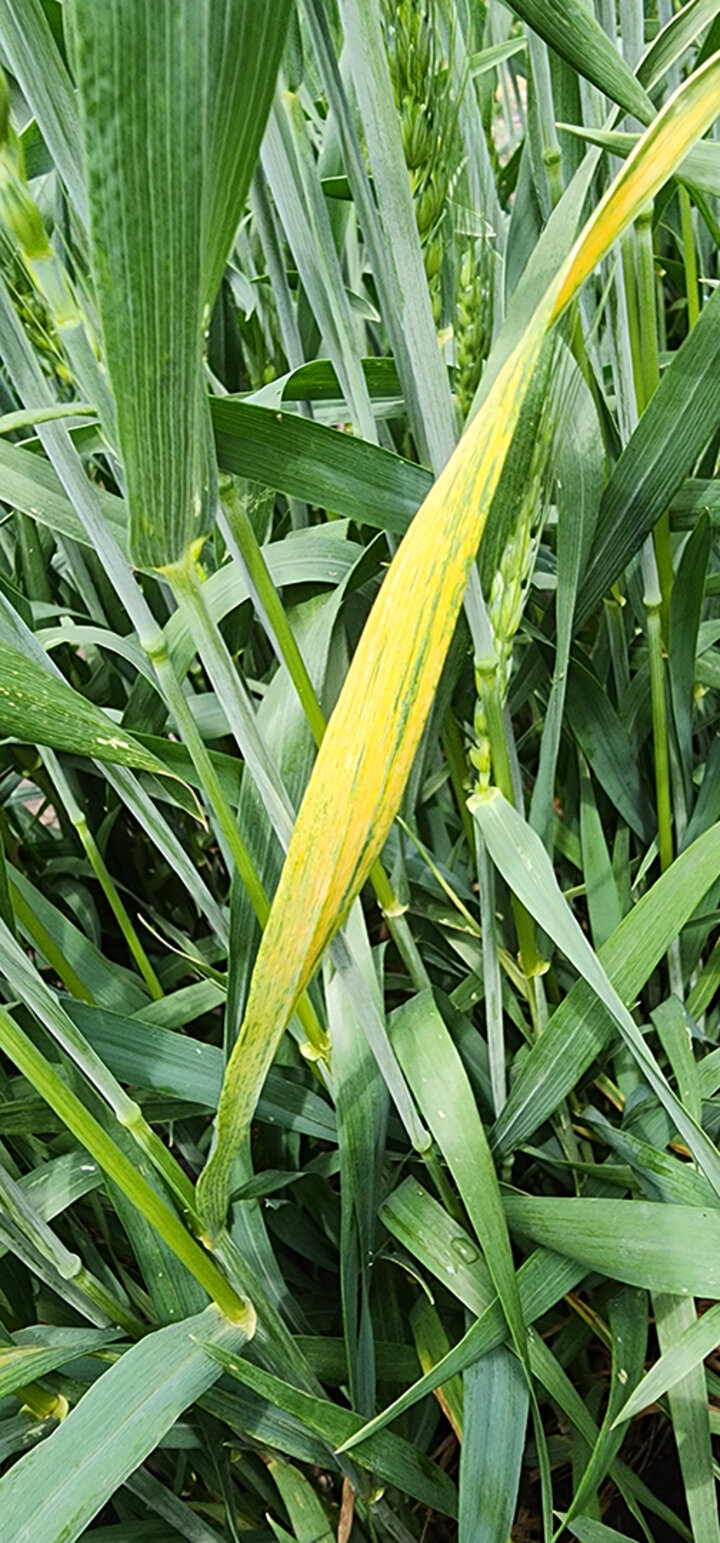
Management
Stripe rust and other foliar fungal diseases of wheat are managed by planting resistant varieties and applying a fungicide to protect the flag leaf.

Virus diseases cannot be controlled once they occur. The most effective strategies for managing the WSMV disease complex are planting resistant varieties and controlling volunteer wheat, especially pre-harvest volunteer, before planting wheat in the fall. The volunteer must be completely dead at least two weeks before planting.
BYD is caused by viruses transmitted by aphids. Controlling aphids by applying an insecticide as a seed treatment or a foliar spray can reduce damage caused by BYD. It is recommended to control aphids based on thresholds established by entomologists; that is, when the aphids are causing economic loss by feeding on the wheat crop. Controlling aphids solely to manage BYD may not be effective because aphids arriving after insecticide treatment will still transmit the viruses that cause BYD.
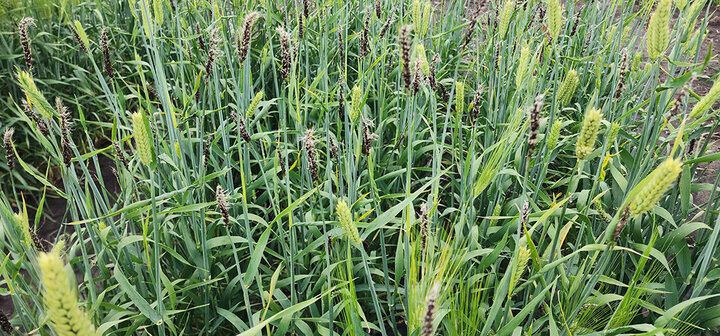
Loose smut is effectively controlled by planting certified, fungicide treated seed. Seed treated by a professional treater is recommended.
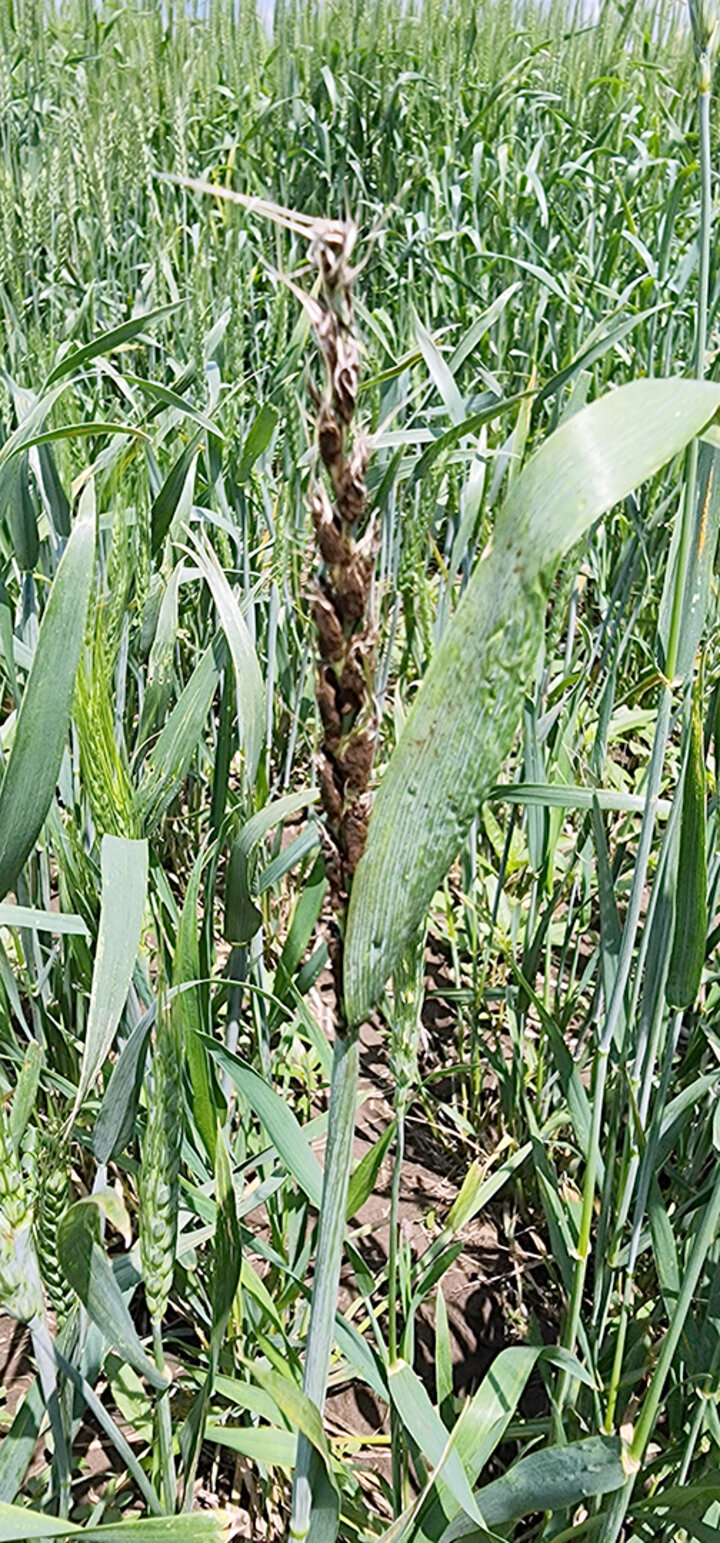
Although Fusarium head blight (FHB) was not observed during the surveys on May 29, the Fusarium risk tool is showing an elevated risk for occurrence of the disease in Nebraska due to the recent rainfall events that have occurred in much of the state. The risk may be high in localized areas that received continuous heavy rainfall before and during flowering.
FHB is managed by integrating moderate resistance and fungicide application at early flowering and up to six days later. For much of the state, wheat is past the flowering growth stage and therefore, it is too late to apply a fungicide to control FHB. A fungicide should not be applied if harvest will take place in fewer than 30 days after fungicide application.
Wheat Disease Survey
As winter wheat continues to develop, Nebraska Extension is monitoring for rust diseases. Help track the spread of stripe and leaf rust across the state by contributing to the 2025 rust tracking map by taking a brief survey.
